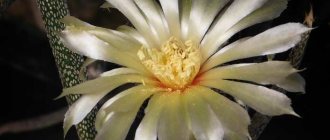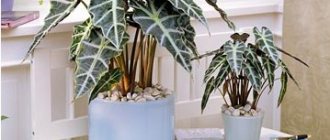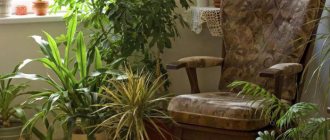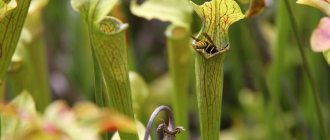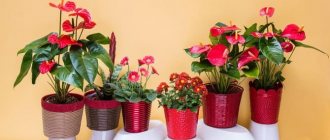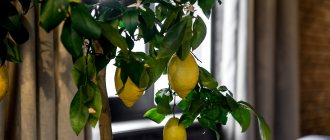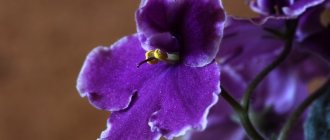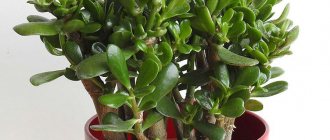Kalanchoe
Dwarf kolanchoe is a miracle of nature, which breeding scientists presented to the world in the form of several varieties, rich in a variety of colors: from white and cream to pink and bright red.
This decorative mini-plant is not afraid of the sun and prefers a lot of light. Small rose inflorescences of double or single flowers are collected in a neat bouquet, framed by frequent, succulent leaves.
Dwarf Kalanchoe rarely grows above 10-15 centimeters and is not at all demanding in care: it is enough to regularly water and replant the plant.
Despite all the advantages and visual attractiveness, it is very difficult to find dwarf varieties of Kolanchoe for sale. A miniature indoor flower retains its decorative properties all year round. And if you select the right pot, it looks like a stylish accessory.
Potted roses
You can’t do without the queen of the garden at home. It seems that no one will dispute the beauty of this flower. A sophisticated plant does not require much space, and you can choose varieties to suit every taste. Dwarf roses come in a variety of colors, and you can choose flowers that have a strong scent. As a rule, indoor roses have a long flowering period.
- Growing roses on a windowsill - how to preserve and prolong flowering
Did you get a rose in a pot as a gift on March 8? That’s great, which means you’ll enjoy its flowering longer than with a regular bouquet.
A small apartment is not a reason to deny yourself the charm of fresh flowers. This is more of a challenge, and if you accept it, you will be surprised how flower arrangements will change your home. Definitely for the better.
Echeveria
Echeveria is a succulent plant classified as a perennial herb. The diameter of the rosette is only 15 centimeters, and the height is from 10 to 30 cm. At the moment of flowering, the succulent is surprisingly transformed: it seems that the plant is made of artificial flowers.
Small bell-shaped corollas of pink, yellow or brown colors are located on a dense long stem-peduncle with a paniculate inflorescence.
The low-growing bush itself consists of a large number of leaf rosettes, colored bluish or bright green. Although the plant is unpretentious, its dense, fleshy leaves are quite vulnerable.
Each of them is covered with a thin whitish coating, under which moisture and nutrients accumulate. At the slightest touch, the delicate shell is easily damaged and the plant suffers.
To avoid this, you need to place the unusual flower under glass or cover it with film. The mini-flower needs good lighting, regular watering and weekly feeding with special nutritional mixtures for succulents.
Lemon
Yes, we decided to start with a fairly large (with proper care) plant. If the size of your home allows you to place one large flowerpot, then make your choice in favor of a lemon. Shape its crown so that the representative of the Citrus family grows in height. This way you will save free space. Lemon will attract the eye with its beautiful green foliage, and during flowering it will fill the room with a delicate aroma. In addition, its flowers look very beautiful. A self-grown sour delicacy should be an additional incentive for you to purchase lemon.
- Top 5 Citrus Fruits You Can Easily Grow (and Eat) at Home
You can grow more than just the usual lemon from a seed at home!
Decembrist
Zygocactus Schlumbergera or Decembrist is a beautiful ornamental plant, which is a representative of the genus of epiphytic cacti. The main difference between the Decembrist and many other indoor plants is that its flowering begins at a time when most ornamental crops enter a dormant period.
If you keep watering the plant to a minimum for 6-8 weeks from the end of September, in winter the Decembrist will delight lovers of indoor plants with bright flowers of pink, red and orange or white.
If cacti usually respond well to sunlight, then the Decembrist requires obligatory shading, otherwise the final fragments of the stems will begin to die off. In general, the plant is not too demanding to care for. However, it needs adequate watering, diffused light and good air humidity.
If the Decembrist is provided with suitable conditions for development and growth, then it will delight with its flowering for 15-20 years. A compact bush strewn with graceful flowers looks very unusual in winter.
Violets
Perhaps this option can be called classic. Violets grow without problems in small containers, do not take up much space, but at the same time they cannot be called inconspicuous. Their bright colors include not only all the colors of the rainbow, but also all possible shades. So if you want to add some color to your apartment, then create a multi-colored ensemble on the windowsill. A monochromatic composition will look no less attractive.
- 6 reasons why violets don’t bloom at home
Capricious Saintpaulia refuses to please with lush flowering? Let us help your grief!
Crassula oval
Crassula oval is an unassuming semi-herbaceous plant, which in our country is more often called the money tree or the tree of happiness. The flower requires virtually no care.
All this plant needs is moderate watering, bright lighting and good air ventilation. The fat woman takes root well in sunny and bright corners of any apartment. It will look great in the company of relatives or other succulents as part of a decorative composition.
Succulents
If every centimeter of space counts for you, as well as time for care, choose succulents. These babies look fantastic. They will fit perfectly into a high-tech apartment. They can decorate window sills, work areas and even shelves. Succulents also look interesting in hanging flowerpots. And recently it has become fashionable to create mini-gardens from them.
- A garden of succulents on a windowsill - which ones to plant and how to care for them
Compositions made from succulents are a wonderful decoration for any apartment.
Pedilanthus
The plant is named so because of the appearance of its spectacular inflorescences. So “pedilon” translated from Greek means “shoe”, and “anthos” means flower. It is because of the original flowers that the plant is popular among gardeners.
The appearance of pedilanthus is very diverse and can differ strikingly from each other depending on the climatic and natural conditions of their growth.
Pedilanthus titimaloides is a very pretty and unassuming plant, which is a highly branched small shrub. This plant has interesting foliage that is dark green with whitish flecks along the center and edges.
Pedilanthus largefruited is a succulent that has almost no foliage, but has large, round, water-storing shoots. Pedilanthus spurs looks like a small tree.
In indoor conditions, plants need regular and abundant watering, as they prefer highly moist soil. They are light-loving and thrive on sunny south-facing windowsills.
Most of our living spaces, unfortunately, are small in size, and not every gardener can afford to keep large indoor plants in a limited area.
In this case, compact representatives of ornamental crops, which are no worse than their tall counterparts, can become an original decoration of any interior.
Everyone can afford to choose a plant to their taste: beautifully flowering, deciduous or succulent. It can become part of a stylish decorative composition, and at the same time it will not take up much space in the apartment.
- Author: Inna Kiseleva
Stephanotis
A more conservative option for vertical gardening. This vine is so beautiful that it is often mistaken for artificial decoration.
Let the vine climb the wall and enjoy. The waxy, dark green leaves are good on their own. And when the time of flowering comes, it is impossible to take your eyes off stephanotis. Delicate white flowers are collected in dense inflorescences, the flowering itself is very abundant and is accompanied by a strong aroma (it is not for nothing that this plant is called Madagascar jasmine). By the way, an increase in aroma may indicate the approach of rain.
- Indoor plants that attract luck, money and bring happiness to the home
The magical properties of these plants can completely change your life! They are also suitable as a useful gift.
Specifics of landscaping with annuals
Low garden annual flowers planted with seedlings allow you to create a magnificent flower bed in 2-3 weeks. These unpretentious annual flowers seem to be made for the garden. Low-growing forms of plants will make the driveway elegant and neat. Already behind their colorful stripe there will be spectacular tall plants.
Low-growing annuals occupy a decisive place in landscaping due to their unique properties.
- Non-standard compositional design of the flower bed when using different combinations of colors;
- The onset of flowering in a relatively short time;
- Possibility of creating original ornamental flowering rugs;
- Long flowering time;
- A quick and wonderful way to fill empty space between young perennials;
- Easy to care for.
Read also: Reproduction of laurel by cuttings: harvesting, rooting, planting and care
Low annual flowers like to be planted along fences and paths, near walls and next to vegetable plants.
Principles for selecting plants for a flower bed
It is necessary to select low-growing annuals for a flower bed based on some of their general properties and the location of the future flower garden.
Flower beds of flowering low plants differ in characteristics:
- High level of sunlight. Purslane, marigolds, nasturtium, geranium, calendula, dahlias from seeds, alyssum, and petunias will bloom well here. Chlorophytum, ornamental cabbage, coleus, and cinneraria will reveal the beauty of their bright leaves;
- Presence of partial shade. Such conditions are favored by balsam, calceolaria, begonia, and fuchsia;
- Humidity. Begonia, balsam, ornamental cabbage, and coleus grow well;
- Color palette.
Based on the color of flowers or leaves of plants, they are guided by variegation, contrast or harmonious transitions. Low-growing white flowers are always appropriate. There are many such annuals with different flower sizes.
Border plants
Annuals for borders play a special role. They either contrast with the surrounding plants, or neutral colors - silver and white - prepare for contemplation of a colorful show. When selecting flowering low-growing annuals, they are guided by the following rules:
Proper care, regular watering and fertilizing will provide a border of low flowers or decorative foliage annuals with a spectacular appearance from spring to autumn.
Amaryllis
The pot for this flower should have an elongated shape, since amaryllis has a powerful root system that grows exclusively downwards. In this case, the container can be narrow, since only in such cramped conditions can this plant fully develop.
Amaryllis should be replanted no more than once every 3-4 years, choosing a container a couple of centimeters wider than the previous one. You need to be careful when removing a flower from an old pot so as not to damage the roots and bulb. When replanting, it is recommended to remove rotten roots and daughter shoots, which will subsequently hinder the expected flowering.
Spring plants
The most useful indoor plants for the home
Early crops will help create bright islands on the site after the snow melts. Beautiful flowers appear from the ground on the first warm days. Properly selected spring low-growing perennials will illuminate flower beds and borders with spectacular blooms.
Crocuses
Narrow basal leaves grow from the bulb, which are collected in a small bunch. The height of the plant varies between 7-15 cm. Single goblet-shaped buds reach 5 cm in diameter. Depending on the variety, flowering occurs:
- white;
- creamy;
- blue;
- lilac;
- yellow.
Bordered, two-tone or spotted patterns are common. Petals with scales open on a short peduncle. Flowering duration is 2-3 weeks. Low-growing perennials can withstand frosts down to -8 C and look spectacular in the snow. When the temperature rises to +20 C, crocuses fade within a day.
Low perennial primroses Source yandex.ua
Bulbous plants are planted in August-September. Primroses prefer to develop in well-lit areas or in the partial shade of unblown bushes. Due to the variety of shapes and shades, crocuses look beautiful both solo and in combination with other species. The culture is often used for group plantings in flower beds or among rock garden stones. Every 4 years, primroses are planted, otherwise the decorative effect of the buds is lost.
Hyacinths
Representatives of the species can be recognized by their voluminous peduncle covered with many small flowers of white, blue or burgundy hue. Thin long leaves are collected in a loose bunch. Like crocuses, at temperatures above +20 C, hyacinths quickly fade. The height of the low-growing perennial does not exceed 20 cm.
Beautiful first perennialsSource flo.discus-club.ru
Plants grow well in light partial shade of deciduous bushes and trees. Primroses prefer fertile soil with a neutral pH. The culture does not like waterlogging, so it is better to plant it at higher elevations. The buds begin to be thrown out from the second year of life.
Daffodils
Low-growing varieties of spring bulbous species look very decorative and graceful. The Tazetta hybrid has up to 5 creamy-yellow buds with a diameter of 2.5 cm on one peduncle. The height of the plant does not exceed 15 cm. The opening period of the petals lasts from the end of March to April.
Daffodils from the group of Jonquillies and Tubulars look original. The rich green perianth emphasizes the brightness of the golden crown. The culture grows no more than 20 cm. On one peduncle, 3-4 buds develop, collected in a loose bouquet. Varieties open their petals in mid-late spring, pleasing for 3 weeks.
Graceful low-growing perennialsSource agricultural portal.rf
Tulips
Dwarf botanical species are low-growing perennials, the height of which does not exceed 30 cm. In tiny, graceful crops, the bud size is 5 cm. Miniature tulips harmoniously combine the features of a wild plant and a cultivated hybrid:
- resistant to “onion” fungi;
- no need to dig up for the winter;
- do not require a garter.
Unlike crocuses and traditional tulips, the low-growing plant grows well in partial shade. The intensity of the sun does not affect the appearance of buds and the brightness of the petals. The culture blooms in late March-early April when the weather is warm.
Periwinkles
The evergreen perennial will delight you with its beauty in the spring throughout the growing season. After the soil warms up, the surface is covered with multiple buds. The diameter of the petals does not exceed 3 cm. Shades vary from soft blue to rich burgundy.
Design with periwinkleSource podkarpackiesady.pl
The flowering period for periwinkles is from May to early June. In summer, the low-growing perennial is used as a ground cover. Figured greens can be either elegant glossy or brightly spotted. The culture is characterized by slow development and love of shade, so it is planted under bushes or young (dwarf) trees.
Small indoor plants
The most unpretentious indoor plants: a selection with photos
Among beautiful indoor flowers, miniature representatives of the flowering plant world occupy a special place. They were created artificially by breeders and are exact copies of their full-sized ancestors.
Mini violets
The scientific name is dwarf synpolia. The leaves and the plant itself are several times smaller than the progenitor, but this does not affect flowering. Mini violets bloom as brightly and unforgettably as their full-sized relatives.
Miniature Kalanchoe
The bred miniature Kalanchoe will not grow more than 15 cm in height. Dwarfism did not affect flowering; these babies bloom with beautiful cream or red flowers.
Important! Decorativeness and miniature size do not complicate the process of caring for the plant. It still loves timely watering
Mini gloxinia
Miniature gloxinias do not require special care and maintenance conditions. They bloom, like normal-sized gloxinias, in the summer. After flowering for the winter, the plant goes into a dormant period. The leaves die, leaving one tuber, from which a new green part will sprout in the spring, followed by flowering.
Mini roses
Potted beauties, reminiscent of their garden relatives, although smaller in size, have not lost their pink feature - a typical aroma. The plant blooms just as beautifully, with leaf shape identical to life-size roses. Apartment maintenance requires compliance with the temperature regime - mini-roses die at high temperatures. The optimal indicator for growing and flowering is +18˚С. Already at +22˚C the plant becomes hot and it may die.
Mini roses
Fittonia
A small indoor flower loves warmth and diffused bright light. Fittonia attracts with its interesting leaf pattern - clear white lines contrasting with the greenery make the foliage look like a quail's egg.
Soleirolia
An indoor flower with miniature leaves has ampelous shoots. Saltirolia does not require special care. As an addition to regular watering, spraying can be noted in the hot season.
Sansevieria
This stemless indoor flower feels great in a wide, but not deep pot. This is due to its root system, which grows mainly in breadth.
In order for Sansevieria to actively grow and bloom steadily at least once a year, it needs to be planted in loose soil consisting of leaf and turf soil with a mixture of sand.
It is recommended to replant the flower if there are roots protruding from the pot, some of which can be removed with a sharp knife.
Pemphigus vulgaris (from 2 mm)
Common bladderwort is a carnivorous aquatic plant that belongs to the Bladderwort family. This plant can be found on any continent except Antarctica. Mostly bladderwrack grows in flooded areas - near lakes or swamps.
The plant has a long stem floating on the surface of the water, on which flowers and thin (from 2 mm to 10 cm wide) dark green or burgundy leaves are located. Small drops of bait for insects (flies, larvae, beetles, etc.) are hidden between the leaves.
Pemphigus is grown by people mainly to decorate aquariums or terrariums.
4
Coniferous plants on a trunk
In the gardens of private collectors and producers of planting material for these plants who are passionate about their “coniferous business,” you can find very tiny specimens of conifers on a trunk, for example, Korean fir Silberperle , mountain pine Leuco-Like and others. They definitely need to be viewed against some contrasting background, for example, among flat tiles of stones on a decorative rolling pin or on an alpine slide.
Korean fir Silberperle
